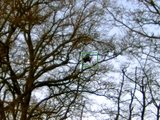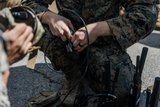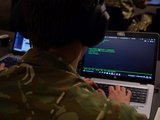Raytheon to advance thermal imagers manufacturing
Raytheon has announced that it has been awarded a Defense Advanced Research Projects Agency (DARPA) contract to develop a wafer scale manufacturing process that will make thermal imagers affordable and accessible to every warfighter. According to Raytheon, the $13.4 million contract was awarded under the Low Cost Thermal Imaging Manufacturing (LCTI-M) programme.
The three-year contract will see Raytheon Vision Systems (RVS) develop manufacturing processes to reduce the size, weight, power and cost of thermal cameras so that they can be integrated into PDAs or cell phones. Wider availability will enhance situational awareness and information sharing among dismounted soldiers and individual intelligence personnel, where a common view of the battlefield is critical.
Raytheon said that making high-performance thermal imagers available to every vehicle, surveillance device and dismounted soldier will give them greater situational awareness in low light, adverse weather and obscured environments. Infrared imaging can capture clear images and valuable information even in environments with severely degraded visibility. Because of their small size and low power requirements, thermal imagers can be integrated into hand-held units, rifle sights, helmets or eyeglasses, and can support extended missions. Additionally, the captured images can be shared instantly for intelligence analysis, surveillance and reconnaissance, or mission command.
More from Digital Battlespace
-
![Wave Relay devices cleared for security use on commercial systems in industry trend]()
Wave Relay devices cleared for security use on commercial systems in industry trend
Persistent Systems has been cleared by National Security Agency (NSA) to transmit sensitive data on commercial networks. The devices are added to the NSA’s Commercial Solutions for Classified (CSfC) component list which also includes other companies’ products providing the same security.
-
![UK teases cyber spending boost in Strategic Defence Review ahead of “imminent” release]()
UK teases cyber spending boost in Strategic Defence Review ahead of “imminent” release
The release of the UK’s Strategic Defence Review (SDR) has been long promised as mid-year. It is possible it could be as early as 2 June although the UK Ministry of Defence (MoD) continues to play its cards close to its chest.
-
![Intelsat emphasises SATCOM resilience for SOF in contested domains (video)]()
Intelsat emphasises SATCOM resilience for SOF in contested domains (video)
Intelsat outlines how its multi-orbit SATCOM architecture is enhancing connectivity and resilience for special operations forces operating in degraded and contested environments.
-
![US Space Force’s next-generation missile warning system moves forward with $500 million in new contracts]()
US Space Force’s next-generation missile warning system moves forward with $500 million in new contracts
Next-Generation Overhead Persistent Infrared (Next-Gen OPIR) satellites are intended to provide early warning of missile launches from any location worldwide and new ground stations will result in expanded coverage of critical missile warning.























